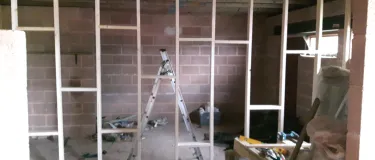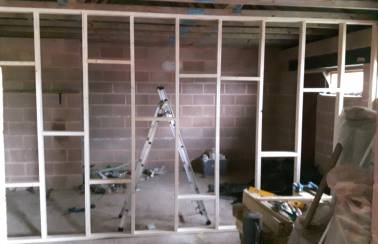Bat’s the way to do it: How Aggregate Industries successfully rehomed rare bat species as part of quarry development
Aggregate Industries once again showed its commitment to help safeguard wildlife on and around its sites with a unique project to support and successfully rehome two rare species of bat.
The Greater and Lesser Horseshoe bats are two of the rarest species of bat found in the UK and there are longstanding records of them in the area around Aggregate Industries’ Westleigh Quarry, in Devon.
When Aggregate Industries first started planning a project to develop a new area of the quarry in 2005, it worked closely with Natural England to put in place a number of protection measures including standoff periods while the bats were active and hibernating. It also built a new roost in 2019, which was approved by Natural England and designed specifically for the individual species, to allow the rehoming of bats from an existing bungalow which was approved for demolition.
Now, less than 18 months after the roost was built, there is clear evidence that it has been used by large numbers of bats in summer 2020 – signalling the successful rehoming of these rare species and going some way to demonstrate the company’s commitment to ecology.
Protective measures ahead of quarry development
Simon Wiltshire, Biodiversity and Restoration Advisor (South) at Aggregate Industries, said: “We knew when we developed the initial quarry expansion plans back in 2005 that bats were evident in the local area and we immediately instructed JG Ecological Surveys to make sure we were doing everything we can to protect them.
“Two caves on Aggregate Industries land were identified as being hibernation roosts for the rare Greater and Lesser Horseshoe bats over winter. They were sometimes used over summer too, but during this time they generally roost in other local buildings.
“We are proud to be a responsible supplier across all aspects of sustainability and ecology and we immediately worked to understand how we could adapt our plans and processes to ensure the bats were protected.
“The cave roosts determined the extraction boundary for the quarry and we put in place standoff periods in the summer (when the bats were active) and in winter when the bats were hibernating. We followed all the necessary restrictions and continued to monitor the caves throughout the development period, which showed that there was no impact on bat populations in the caves.”
Rehoming rare species
By 2019 the development plans were well under way and an abandoned bungalow located within the permitted extraction boundary of the quarry was set for demolition.
Simon continues: “The bungalow was used as a summer roost by low numbers of Lesser Horseshoe bats and we were obviously mindful of this, as we have been through the quarry development.
“We knew that we would need a European Protected Species Licence (EPSL) from Natural England before demolition could take place and as part of that application we designed a compensatory roost, designed to be suitable for Lesser Horseshoes, that the bats using the bungalow would be able to find and use.
“Working closely with JG Ecological Surveys, we identified a nearby building on quarry land which could be partly converted into a suitable roost. The area was partitioned off with a stud wall, and all light blocked out, except for a small entrance in a sheltered location. A ‘hot box’ was also created in the eaves and other features for the bats to hang from were installed.”
Once Natural England had approved the plans for the new roost, the bungalow was demolished in May 2019 following a final, thorough bat search on the day of demolition. Monitoring of the new roost was kept to a minimum to avoid disturbance to any bats, but a visit in late summer 2019 found Lesser Horseshoe droppings – exciting news considering that many artificial roosts for bats and other protected species are never used or take many years to be found.
Simon adds: “The fantastic news came in autumn 2020, when large amounts of Lesser Horseshoe droppings were found in the roost, indicating that it had been used that summer by multiple bats, including in the ‘hot box’. A Greater Horseshoe bat was also found in the roost, apparently hibernating.
“For this roost to be used so quickly by the target species and the other rare species of bat in the area is a great result for the bats but also a fantastic demonstration of our responsibility to ecology in practice.
“By working closely with the experts and taking into account the needs of the wildlife, we were able to design and build a compensatory roost for a significant proportion of the usual cost. It shows that with innovative design in the best location, this approach to ecology really can make a difference.”
Press contacts
-
Telephone
01530 510066
-
Email
- Aggregate Industries Switches To Warm Mix Asphalt As It Continues With Sustainability Pledge
- Aggregate Industries signs up to innovative Pallet LOOP Charter
- Aggregate Industries launches Aggneo 100% natural secondary aggregate
- Aggregate Industries launches ambitious 2030 sustainability strategy: Building Progress for a Sustainable Future
- London concrete’s carbon neutral ECOPact Concrete used at landmark Watford development







